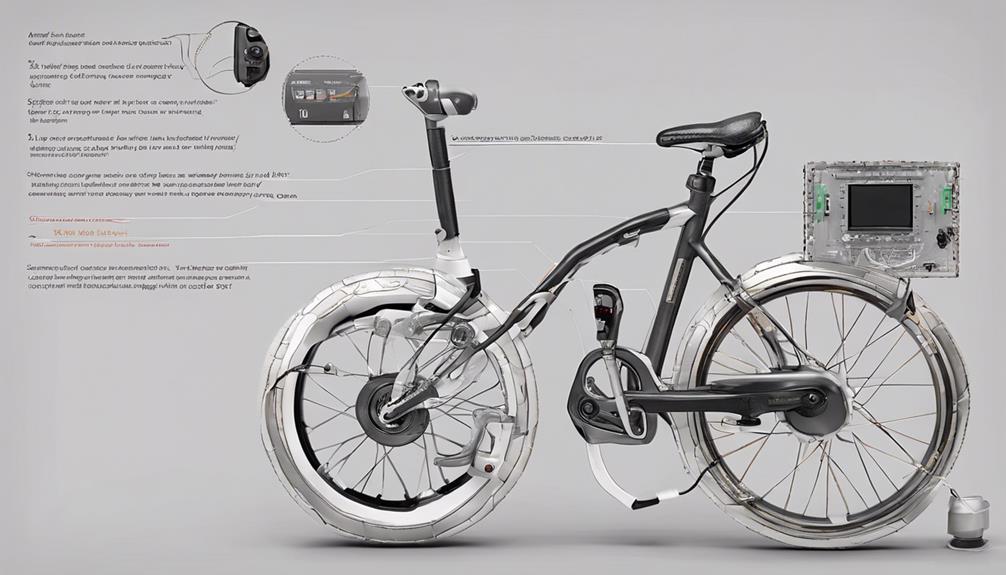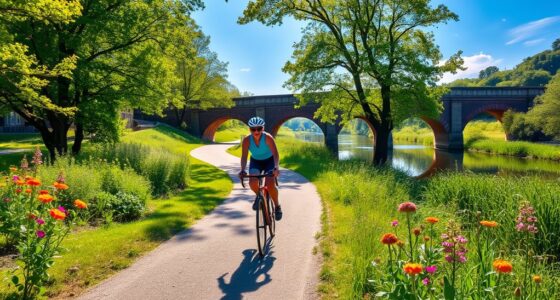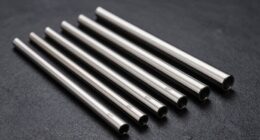Creating a custom off switch for your electric bicycle might seem like a daunting task, but with just five easy steps, you can ensure the safety and longevity of your high-powered ebike.
Have you ever considered the potential risks associated with using normal switches on DIY electric bicycles? What if there was a straightforward way to address these concerns and enhance the overall safety of your ride?
Join us as we explore the practical steps to design an efficient off switch for your electric bicycle, providing peace of mind and a smoother riding experience.
Key Takeaways
- Position the off switch strategically for easy access and protection from elements.
- Ensure a secure and direct connection to the power source with proper insulation.
- Test functionality to confirm motor shutdown and throttle inactivity for safety.
- Prioritize user-friendly design, durability, and long-lasting performance for the off switch.
Gather Necessary Tools and Materials
To successfully gather the necessary tools and materials for creating an off switch for your electric bicycle, we must first ensure we've a waterproof on/off switch, a soldering iron, solder, heat shrink tubing, and wire cutters rated for the voltage and current of the bike to handle the power.
The rear wheel is a critical component of an electric bicycle, and as we delve into this project, the rear wheel's connection points will be essential. The off switch we're aiming to install will provide us with the freedom to control the electric flow to the rear wheel, empowering us to stop the bike efficiently when needed.
Ensuring the switch's compatibility with the bike's power specifications is crucial for a safe and effective installation. By having the right tools such as the soldering iron, solder, heat shrink tubing, and wire cutters specifically rated for the bike's voltage and current, we set the stage for a successful modification to enhance our biking experience.
Locate a Suitable Position for the Off Switch

Considering the importance of accessibility and protection, we aim to identify an optimal position on the electric bicycle frame or handlebars for securely mounting the off switch. When selecting a location for the off switch, we need to ensure it meets the following criteria:
- Easy Reach: Place the off switch where it can be easily accessed while riding to allow for quick and convenient operation.
- Protection from Elements: Choose a spot that's shielded from water and debris to safeguard the switch and promote longevity.
- Visibility and Ergonomics: Mount the off switch in a visible and ergonomic position for effortless and comfortable use during your rides.
- Secure Attachment: Ensure the off switch is firmly attached to the frame or handlebars to prevent any movement or dislodging while in use.
Install the Off Switch on Your Electric Bicycle

Positioning the off switch on your electric bicycle frame or handlebars is a critical step in ensuring easy access and safe operation while riding. When installing the off switch, consider a location that allows for quick and instinctive activation without compromising your grip on the handlebars. One popular placement option is near the thumb throttle, as it enables seamless control adjustments while riding.
To maintain the off switch's functionality and longevity, ensure proper insulation and waterproofing to shield it from environmental elements. Properly wiring the off switch to the controller is crucial for seamless operation. Double-check the connections to prevent any potential malfunctions.
For added convenience and aesthetics, you may want to integrate the off switch into your handlebar grips or dashboard. This setup not only enhances the overall look of your electric bicycle but also provides a more ergonomic and user-friendly experience. After installation, test the off switch multiple times to confirm its functionality and guarantee rider safety.
Connect the Off Switch to the Power Source

When connecting the off switch to the power source of your electric bicycle, ensure a direct link for controlling the flow of electricity efficiently. This step is crucial in managing the power supply and ensuring the safety of the rider.
Here are four important aspects to consider when connecting the off switch to the power source:
- Direct Connection: Establish a direct electrical connection between the off switch and the power source to enable seamless control over the flow of electricity.
- Secure Wiring: Ensure the wiring between the off switch and the power source is properly insulated and securely fastened to prevent any loose connections that could disrupt the electrical flow.
- Proximity: Place the off switch close to the power source to minimize the length of wiring needed, reducing the risk of interference and ensuring efficient operation.
- Accessibility: Position the off switch in a convenient and easily reachable location on the electric bicycle for quick and hassle-free access when turning the bike on or off.
Test the Functionality of Your Off Switch

To evaluate the functionality of your off switch, test its ability to interrupt the power supply to the motor when activated. Make sure that when you engage the off switch, the motor stops receiving power immediately. This action ensures that you have a reliable means to cut off the motor when needed for safety or maintenance purposes. Additionally, verify that the off switch prevents the throttle from engaging when turned off. This feature is crucial in preventing accidental acceleration when the motor should be inactive. Check for any sparking or arcing when using the off switch, as this can indicate a proper disconnection of power. Confirm that the off switch is easily accessible and intuitive to use while riding, enabling quick and effortless operation. Lastly, ensure that the off switch is durable and capable of handling the amperage of the electric bike to guarantee long-lasting performance.
| Off Switch Functionality Test | Action |
|---|---|
| Interrupts power supply to the motor when activated | Ensure immediate motor shutdown |
| Prevents throttle engagement when turned off | Verify throttle inactivity |
| Check for sparking or arcing | Ensure proper disconnection |
| Easy accessibility and intuitive use | Confirm user-friendly design |
Frequently Asked Questions
How Do You Turn off an Electric Bike?
To turn off an electric bike, we simply locate the on/off switch, typically found on the controller or dashboard. Press or flip the switch to the "off" position. This action safely powers down the bike, conserving battery life.
How to Make an Electric Bike Step by Step?
When making an electric bike step by step, we determine power needs, choose a suitable on/off switch, connect it properly, test for functionality, and secure its placement for convenience. This process ensures efficient and safe operation.
How Do I Turn on the Power on My Ebike?
We find the power switch near the battery or handlebars. Press it to activate the electric motor. Ensure the battery is charged. Some ebikes have key-based ignitions. Always follow the manufacturer's instructions for safety.
How Do You Unrestrict Ebike Speed?
To unrestrict ebike speed, relocate the magnet, adjust the sensor alignment, modify LCD settings for higher speeds, remove speed limiter wire from controller, and connect throttle wires for throttle control. Enhance safety with gear, horn, and comfort.
Conclusion
In conclusion, by following these 5 easy steps to create your custom off switch for your electric bicycle, you can ensure a safer and more efficient ride.
Just like a well-oiled machine, your ebike will now have a reliable shutdown mechanism in place, ready to bring you peace of mind on your next adventure.









